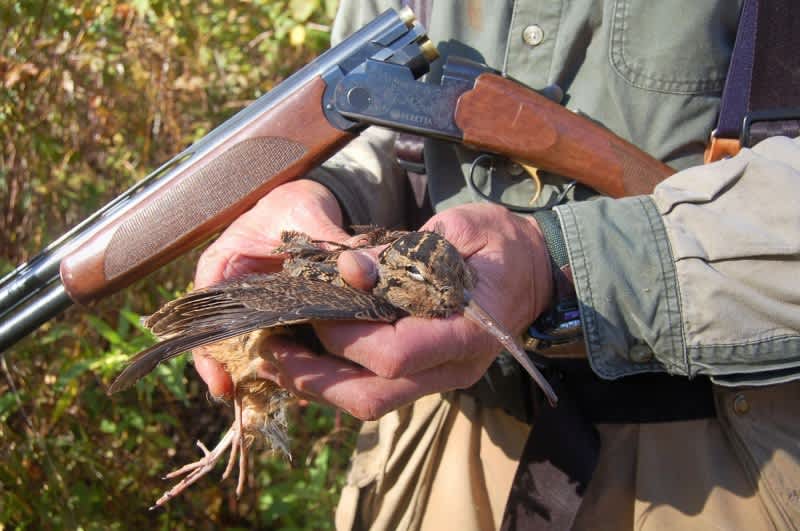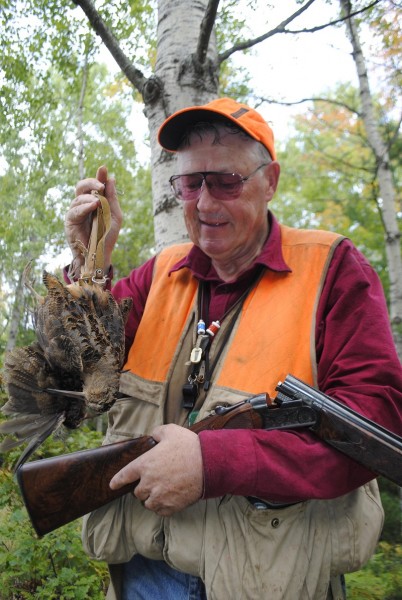Why Michigan is the Number-one State for Woodcock Hunting
Bob Gwizdz 08.18.15

Not long ago, when an internet ranking of states for overall livability put Michigan at the top and it listed a number of the state’s virtues, an odd thought popped into my mind: it didn’t even mention woodcock hunting.
No other state is so closely connected to the little needle-nosed game birds as Michigan. More woodcock nest and hatch in Michigan than anywhere else in the United States and when it comes to the hunting harvest, no other state comes near. Michigan is the woodcock-huntingest state in the union.
There are a variety of reasons, but certainly high on the list is the amount of public forest land in Michigan. Woodcock are birds of early successional forests; they thrive in the sort of woodlots that seem almost impenetrable.
Woodcock—actually members of shorebird family that have adapted to uplands—are unusual critters. They’re short, plump birds with large heads that you might guess were flightless if you saw them walking on the ground. Though they have an unusual flight pattern on the flush, they are obviously strong flyers as they hatch in the Northwoods but winter in the Deep South.
Closely associated with ruffed grouse hunting (both prefer high stem-dense habitat), woodcock differ from grouse in a number of ways. They’re a dark-meat bird, more akin to waterfowl on the table than the white-breasted grouse. Woodcock feed on earthworms and other invertebrates that they find by probing the moist earth with their prehensile bills. They are often found in the same woodlots as ruffs, but they are not as dependent on aspen forests as grouse, which feed heavily on aspen buds. Any stem-dense, early age woodlot (honeysuckle or plum thickets, for instance) can hold them. Alders along a creek bottom? Perfect.
Because woodcock are linked to grouse (and aspen) by many sportsmen, most woodcock hunters head north to hunt them as southern Michigan lacks the aspen stands of the north woods. But because aspen is capable of growing on some poor quality soils, it isn’t necessarily the best place to find woodcock; how many earthworms live in sand? Truth is, there are plenty of good woodcock hunting opportunities in southern Michigan on state game areas. That becomes especially true as the season progresses and the woodcock begin winging their way south.
Sportsmen’s associations, such as local chapters of the Ruffed Grouse Society, have begun adopting some game areas, providing funding for habitat projects to benefit woodcock in southern Michigan. There’s evidence it’s paying off with increased production.
Al Stewart, the Department of Natural Resource’s upland game bird specialist—and a woodcock enthusiast—says woodcock are getting more attention from wildlife managers these days nationwide, but especially in Michigan.
“When you look at woodcock abundance, we’re number-one in the country,” Stewart said. “We have been, we continue to be, and it shows up in the harvest.”

Woodcock populations have been in decline across North America for the last 50 years (largely because forests are aging) but the decline has been less precipitous in Michigan because of aggressive forest management. Michigan’s aspen forests are timbered on a much shorter rotation than most other trees, so there’s always some woodcock habitat being created.
“We’ve been working real hard to maintain various age-classes of trees on public land,” Stewart said.
Woodcock have one characteristic that makes them especially attractive to hunters: they are sometimes slow to flush, preferring to trust their natural camouflage. They are an excellent quarry for hunters with young pointing dogs. And, although they are not rockets, some hunters say they have problems hitting them because of their unusual flight patterns. Open-choked shotguns with small shot are de rigueur.
As a migratory game bird, woodcock management falls under the purview of the US Fish and Wildlife Service, which sets season frameworks, just as it does with waterfowl seasons. Michigan is allowed 45 days with the season to open no sooner than the Saturday closest to September 22. That’s the way the season’s been set in Michigan—opening as soon as possible and proceeding for 45 continuous days statewide—since the feds adopted that general framework about a decade ago. This year, opening day is September 19. And I’ll bet you a Coke right now I know where I’ll be this year on that date.
Woodcock will never replace ruffed grouse in the hearts and minds of most Michigan bird hunters. But they don’t have to; grouse season is open every day woodcock season is open in both peninsulas.
If nothing else, woodcock are a bonus to grouse hunters when the aspens turn a smoky gold—to coin a phrase—in autumn in Michigan. But they are a worthy quarry in their own right.
For more information on Michigan hunting go to michigan.org. Click here to purchase a Michigan hunting license online.
This article was produced in partnership with Pure Michigan.

